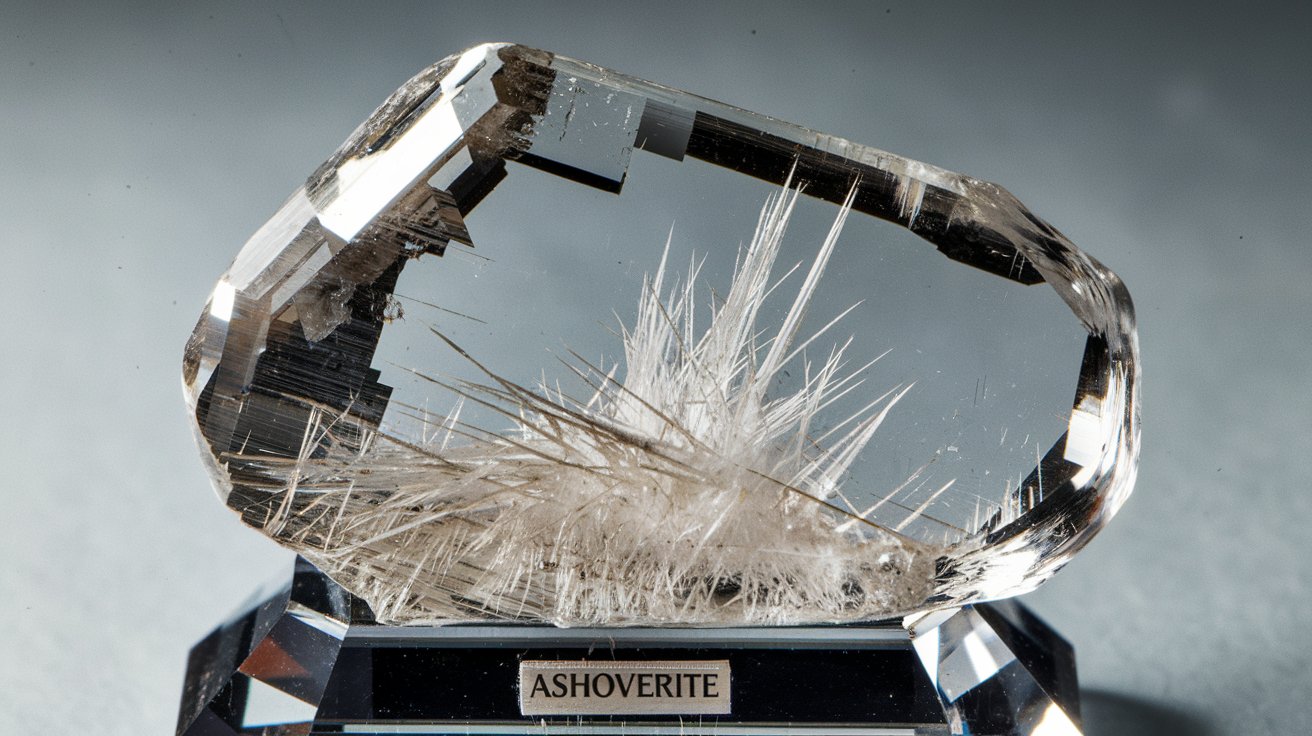
Ashoverite is a rare mineral that has intrigued geologists and collectors alike. Found primarily in the UK, this mineral is known for its unique properties and fascinating history. But what exactly is Ashoverite? It's a zinc carbonate mineral with the chemical formula ZnCO₃. Its crystal structure and formation process make it a subject of study for mineralogists. Ashoverite often appears in white or colorless forms, sometimes with a hint of yellow. Its rarity and distinctive features make it a prized specimen. Whether you're a geology enthusiast or just curious, learning about Ashoverite offers a glimpse into the Earth's hidden treasures.
Key Takeaways:
- Ashoverite is a rare mineral found in England, known for its white crystals and association with zinc. It's a collector's item and can be used for educational purposes due to its unique properties.
- This mineral, discovered in 1980, has a vitreous luster and reacts with hydrochloric acid, producing carbon dioxide gas. It's a testament to Earth's diverse mineralogy and is often displayed in museums for its rarity.
What is Ashoverite?
Ashoverite is a rare mineral that has intrigued geologists and mineral enthusiasts alike. Found in only a few locations worldwide, this mineral has unique properties and an interesting history. Let's dive into some fascinating facts about Ashoverite.
Origins and Discovery
Understanding where Ashoverite comes from and how it was discovered can give us insights into its rarity and significance.
- Ashoverite was first discovered in Ashover, Derbyshire, England. This is where it gets its name.
- It was identified in 1980 by mineralogists. This makes it a relatively recent discovery in the world of minerals.
- The mineral was found in a lead mine. Specifically, it was discovered in the Milltown Quarry.
- Ashoverite is named after the village of Ashover. This small village in Derbyshire is now famous among mineral collectors.
- It is associated with secondary mineralization. This means it forms as a result of chemical changes in pre-existing minerals.
Physical Properties
Ashoverite's physical characteristics make it stand out among other minerals. Here are some key properties.
- Ashoverite is a zinc carbonate mineral. Its chemical formula is ZnCO₃.
- It typically appears as white or colorless crystals. This gives it a distinctive look.
- The mineral has a Mohs hardness of 3.5. This makes it relatively soft compared to other minerals.
- Ashoverite has a vitreous luster. This means it has a glass-like shine.
- It forms in a trigonal crystal system. This refers to the symmetry and shape of its crystals.
Chemical Composition
The chemical makeup of Ashoverite is quite interesting and contributes to its unique properties.
- Ashoverite is composed mainly of zinc and carbonate. These elements are crucial to its structure.
- It can contain trace amounts of other elements. These include iron, manganese, and cadmium.
- The mineral is soluble in acids. This means it can dissolve when exposed to acidic solutions.
- Ashoverite reacts with hydrochloric acid. This reaction produces carbon dioxide gas.
- It has a specific gravity of 4.4. This measures its density compared to water.
Geological Context
Where and how Ashoverite forms is essential for understanding its rarity and value.
- Ashoverite is typically found in hydrothermal veins. These are cracks in rocks filled with mineral-rich water.
- It often occurs alongside other zinc minerals. These include smithsonite and hemimorphite.
- The mineral forms at low temperatures. This is typical for secondary minerals.
- It can be found in oxidized zones of zinc deposits. These areas have undergone chemical changes due to exposure to oxygen.
- Ashoverite is rare and not commonly found in large quantities. This adds to its value for collectors.
Uses and Significance
While Ashoverite may not be widely known, it has some interesting uses and significance.
- Ashoverite is primarily a collector's mineral. Its rarity makes it highly sought after by mineral enthusiasts.
- It has no significant industrial uses. Unlike some other zinc minerals, it is not used in manufacturing.
- The mineral is studied for its unique properties. Researchers are interested in its formation and chemical behavior.
- Ashoverite can be used in educational settings. It helps students learn about mineralogy and geology.
- It is sometimes displayed in museums. These exhibits allow the public to appreciate its beauty and rarity.
Interesting Tidbits
Here are some additional fun facts about Ashoverite that you might find intriguing.
- Ashoverite is often mistaken for other minerals. Its appearance can be similar to smithsonite and calcite.
- The mineral can fluoresce under UV light. This means it can glow when exposed to ultraviolet light.
- Ashoverite crystals can be very small. They are often only a few millimeters in size.
- It is a part of the carbonate mineral group. This group includes other well-known minerals like calcite and dolomite.
- Ashoverite is a testament to the diversity of minerals on Earth. Its unique properties and rarity make it a fascinating subject for study.
The Final Word on Ashoverite
Ashoverite, a rare mineral, holds a unique spot in the world of geology. Found primarily in Ashover, England, this mineral's distinct properties make it a subject of fascination. Its chemical composition, Zn(OH)2, and its hexagonal crystal structure set it apart from other minerals. Collectors and scientists alike value ashoverite for its rarity and the insights it provides into geological processes.
Understanding ashoverite's formation and characteristics can deepen our appreciation for Earth's natural wonders. Whether you're a seasoned geologist or just curious about minerals, ashoverite offers a glimpse into the complexities of our planet's crust. Keep an eye out for this intriguing mineral next time you're exploring geological specimens. It might just spark a newfound interest in the hidden treasures beneath our feet.
Frequently Asked Questions
Was this page helpful?
Our commitment to delivering trustworthy and engaging content is at the heart of what we do. Each fact on our site is contributed by real users like you, bringing a wealth of diverse insights and information. To ensure the highest standards of accuracy and reliability, our dedicated editors meticulously review each submission. This process guarantees that the facts we share are not only fascinating but also credible. Trust in our commitment to quality and authenticity as you explore and learn with us.


